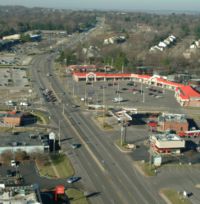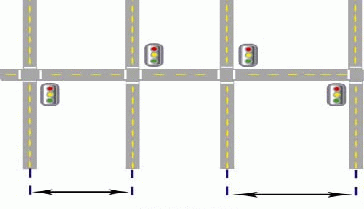940.6 Traffic Signal Spacing
Jump to navigation
Jump to search

Appropriate signal spacing is needed to preserve efficient traffic flow and progression on urban arterial roadways; for instance, a quarter- or half-mile spacing allows traffic signals to be effectively interconnected and synchronized. Adequate spacing will also tend to reduce rear-end collisions and “stop and go” driving that increases congestion, delay and air pollution. In urban areas, these guidelines were developed to allow for smooth operations given a 90-second total traffic signal cycle length.

| Roadway Classification | In Current and Projected Urban Areas | In Rural Areas |
|---|---|---|
| Major, Freeway | Traffic signals not allowed | Traffic signals not allowed |
| Major, Non-Freeway | ½ mile (2,640 ft.) – 1 mile (5,280 ft.) | See note below* |
| Minor | ¼ mile (1,320 ft.) - ½ mile (2,640 ft.) | See note below* |
| * Rural traffic signals are generally isolated signals rather than signals placed in a progression along a route. Signals are to be placed at least 5,280 ft. apart because of high rural operating speeds. | ||